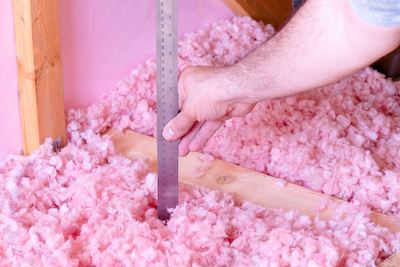Serving Greater Atlanta & Savannah/Hilton Head
The Differences Between Blown-In Fiberglass and Blown-In Cellulose Insulation

<_>
One of the best ways to tighten up the envelope of your home and make it a more comfortable living environment every month of the year is to add more insulation.
If you’ve started the process of looking at which insulation product is best, you’ve probably discovered the two most common products are fiberglass and cellulose. 
Depending on when your home was built, you might have one of the two already in your home. Fiberglass is pink, cellulose is gray, both have advantages and differences, so it’s important to learn which is best for your circumstances.
Both fiberglass and cellulose are easy to install by a trained professional. With the proper training and equipment, they can blow in either type of insulation and produce instant results. A sloppy job reduces the benefits; that’s why it’s important to let a professional handle the job.
Both fiberglass and cellulose have comparable R-values, between 2.1 to 3.7 per inch. This varies depending on how the insulation settles, outside temperatures, and environmental conditions including wind-washing and storms.
If your home is susceptible to frequent wind storms, keep in mind that fiberglass is impacted by air leaks more than cellulose. When properly installed, cellulose conforms better to irregular spaces and settles in and stays put more effectively. Cellulose provides excellent air sealing qualities.
Fiberglass and cellulose have different flammability ratings as well. Fiberglass is spun glass; it doesn’t burn, it melts. However, some fiberglass insulators are backed with craft paper, especially the rolled or batt insulation, which will burn. Cellulose, on the other hand, is made up of ground paper. While old cellulose had a high burn factor, today’s product has been treated with borates, which aren’t harmful to people, yet gives it more fire resistance. An added benefit is it also reduces the chances of insect infestation and biological growth.
Cellulose also has the added benefit of being more environmentally friendly. Because it’s made of up to 80 percent recycled materials, if you’re looking for ways to reduce your carbon footprint, cellulose could be the right material for your home.
Which product is right for your home? Let us come in and evaluate the job and show you the differences between the two products. We can help you make the right choice for your home.
Heater on the fritz? Frustrated with plumbing problems? R.S. Andrews is just a call away!





